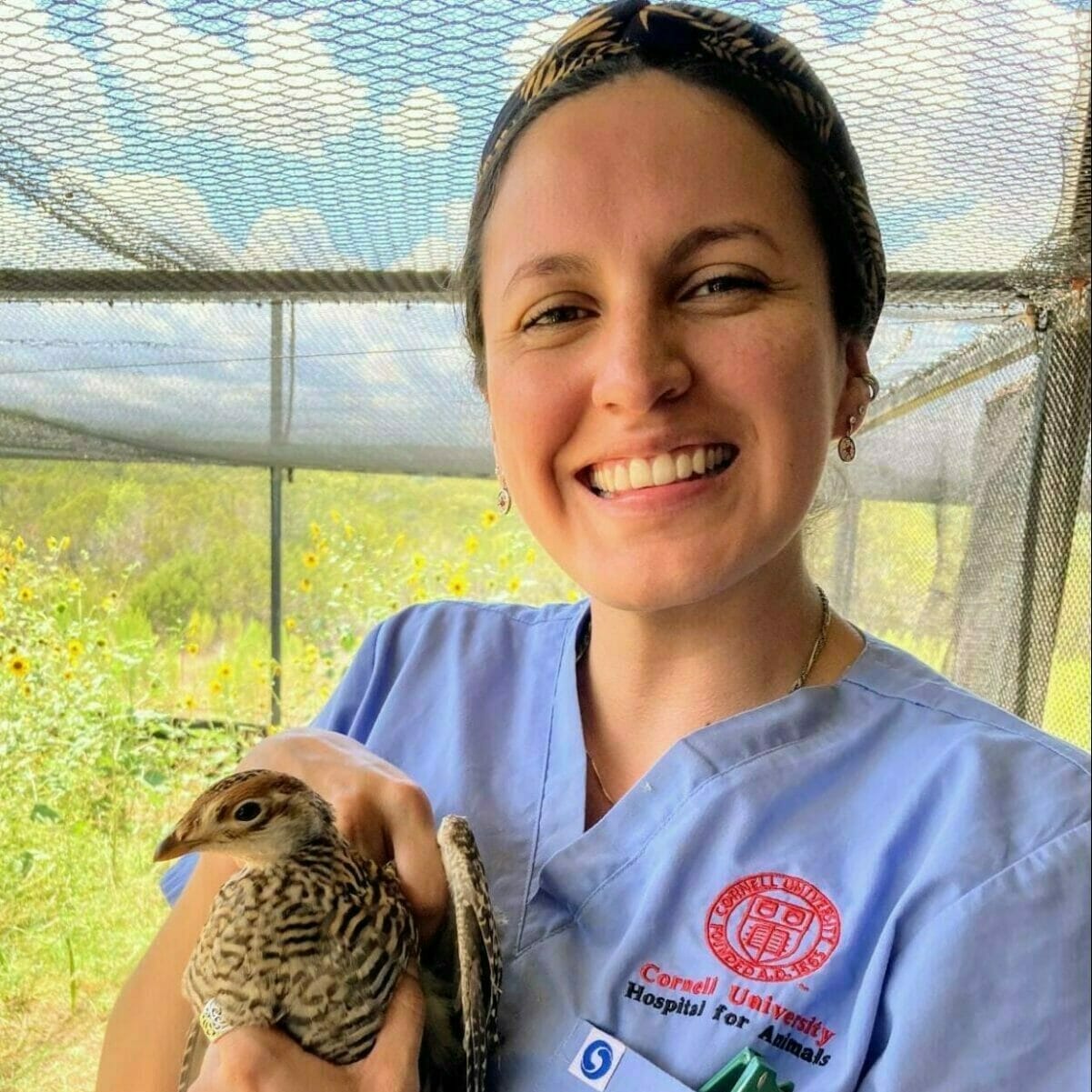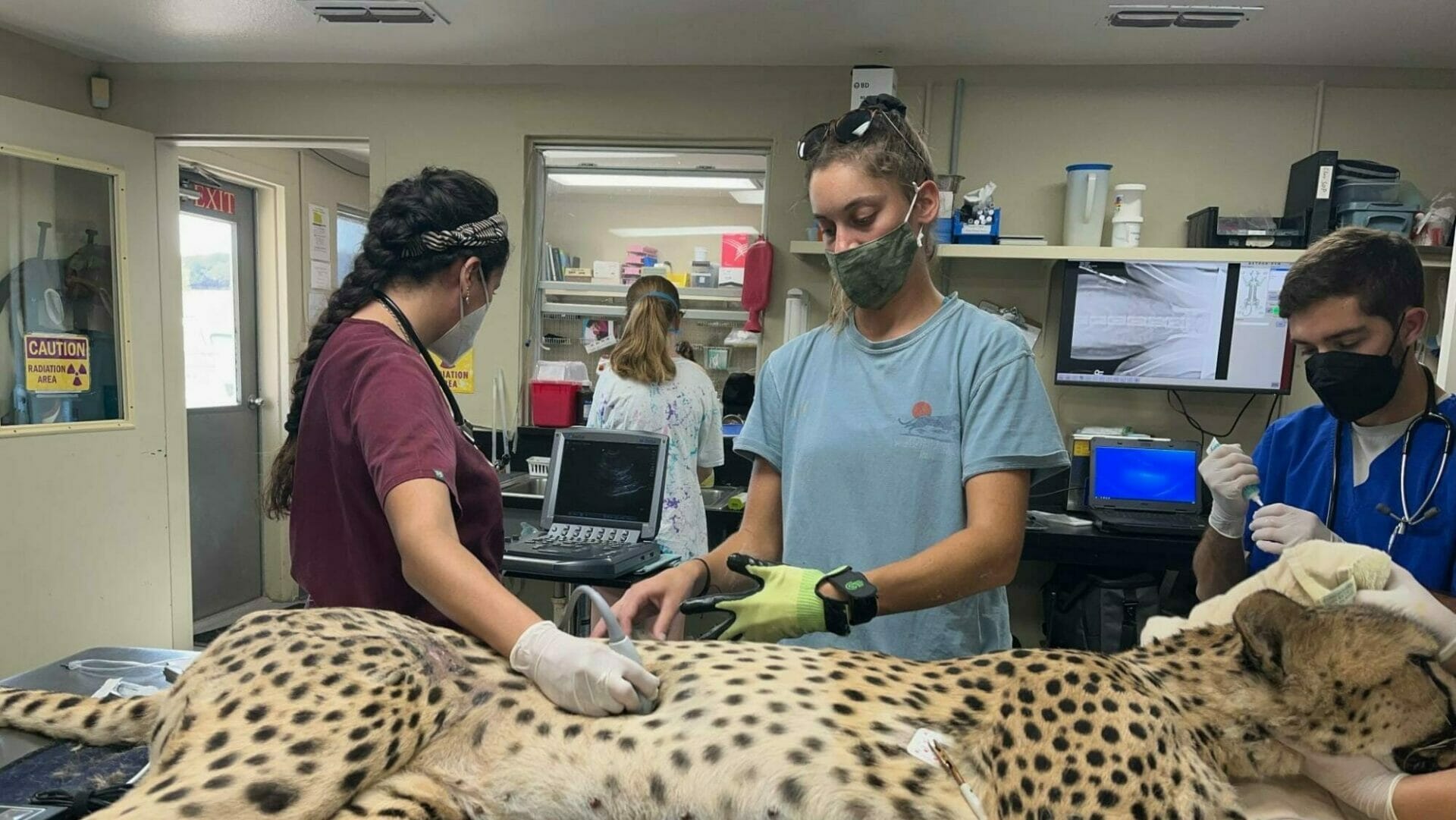
Hello there! My name is Mariacamila Garcia Estrella (Camila for short) and I am a fourth-year veterinary student at Cornell University College of Veterinary Medicine. For the past six weeks, I’ve had the pleasure of being Fossil Rim’s veterinary preceptee for the summer. As someone who has always been passionate about wildlife conservation, this experience has been a dream come true, and has exceeded all my expectations!
The Preceptee Experience
As the vet preceptee, I’ve not only received amazing mentorship from one of the best wildlife vet teams in the field (shoutout to Julie, Holly, Allyssa and Colin!), but I’ve also been able to get hands-on experience with a variety of wildlife patients. From rhinos, giraffes, wildebeest and other hoofstock; to large carnivores like cheetahs, maned wolves, red wolves and black-footed cats. I’ve even gotten to work with the endangered Attwater’s Prairie Chickens. In this preceptorship, I’ve had the opportunity to hone basic clinical skills I will need as a future veterinarian, while also learning new skills that a traditional veterinary curriculum does not provide.
What sets Fossil Rim apart the most, however, is its non-traditional zoo setting; more reminiscent of a game reserve in Africa than a typical zoo. Here, a large portion of the animals are able to move about freely in vast amounts of space, more able to exhibit their natural behaviors as they would in the wild than in a traditional zoo environment. It is particularly this semi-captive setting that attracted me to this preceptorship in the first place

The wide open, vast enclosures most of the animals live in means that in order to provide any medical attention to the many animals at the park, they often need to be darted and immobilized in the field. Not many zoological institutions perform the types of immobilization techniques that are done here on a routine basis. Getting to see how these procedures are done on a variety of animals, the types of drugs used, the kinds of darting techniques/equipment used and how anesthesia is performed in the field from induction to recovery, has been one of the best experiences of my veterinary career thus far!
A Non-traditional Path in Wildlife Medicine
As someone who wishes to pursue a non-traditional career in wildlife/conservation medicine, this preceptorship has provided me with unique experiences that will help me advance my career in the right direction. You see, although I want to work with wildlife, I don’t intend on becoming your typical zoo veterinarian. Instead, I’d like to work at the interface of human-wildlife-livestock conflict in developing nations, combining elements of public health, wildlife conservation and production medicine to mitigate these conflicts between people and wildlife.

Using the philosophy of One Health (the idea that the health of people, animals and the environment are inextricably linked), I want to help rural, farming communities around the world, coexist with wildlife in a way that will not only help farmers economically but will also maintain healthy wildlife populations. Whether this involves darting and translocating elephants or rhinos to other protected areas, or helping rural farmers improve their livestock health and prevent predator conflict, the experience I have gained at Fossil Rim will be extremely applicable in my future career.

